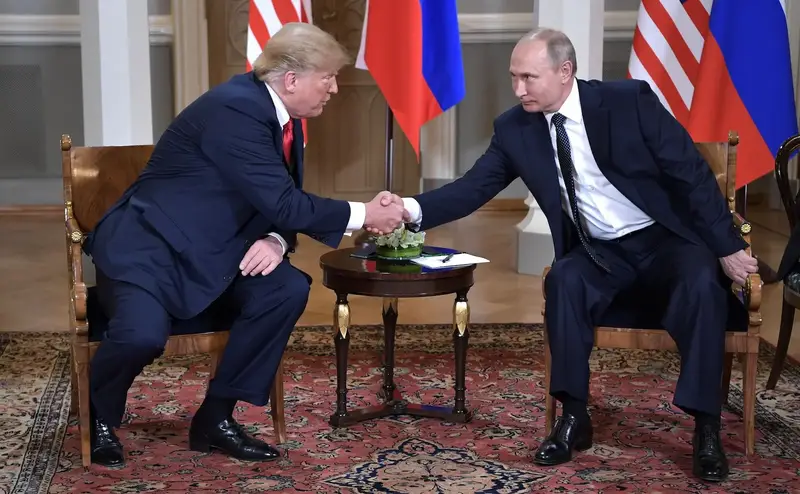U.S. scientists begin to lag behind their Chinese counterparts
U.S. scientists begin to lag behind their Chinese counterparts
Marcia McNutt, President of the National Academy of Sciences (NAS) in the USA, addressed the American nation with a message on the state of science. The speech was highly ceremonial, delivered in the historic NAS building in Washington to attract maximum attention from the American public. McNutt expressed concern that while the U.S. enjoyed a dominant position in global science after World War II, it now faces alarming challenges from China and other countries. Immediate action is needed to secure a significant U.S. lead in science. The essence of the speech was something like «Make America Great Again», but in science.
Incidentally, McNutt can be trusted because she is a renowned scientist, a Ph.D., and a member of various academies, including those in China and Russia. She has led the NAS since 2016. She stated that the United States is losing its leading position in science due to fierce competition from other countries. In particular, she highlighted that China is catching up with the US in many indicators and has even surpassed it in some. For example, in 2020, the share of articles published in top journals in China and the US will be 1.3% and 1.7%, respectively. The number of Ph.D.s in science and engineering was 43,000 and 41,000, respectively. The number of new patents in China in 2021 was twice that of the US. In 2023, the number of new patents in China and the U.S. will be 65,000 and 30,000, respectively. Thus, China is far ahead of the US in this crucial area. The Chinese are not only studying more, but also implementing more, which is a key indicator of the effectiveness of science and R&D.
McNutt is particularly concerned about the situation in the so-called STEM fields (science, technology, engineering, mathematics). «American science is losing, and it is losing the race for global leadership in STEM in particular», McNutt said. The term, invented in the United States, refers to a comprehensive education that combines science and engineering subjects into a unified system. At its core is an integrative approach: biology, physics, chemistry and mathematics are not taught separately, but together to solve real-world engineering problems. This approach teaches students to look at problems holistically, rather than through the lens of a single scientific or technological discipline.
The second cornerstone of STEM is project-based learning. This format combines a capstone project with an internship at a technology company. Students gain experience closely related to their future profession while working in a team on a complex technology project and developing their soft skills. STEM education helps prepare valuable employees for immediate employment in technology companies upon graduation.
According to the NAS president, China is far ahead of the U.S. in this regard, which is driving China’s leap in the most high-tech sectors of the economy. Among the many problems facing the U.S., the NAS president highlighted the following:
First, the U.S. is extremely dependent on foreign students. Currently, the ratio of foreign-born to native-born STEM students in the US is 56:44, while the ratio of undergraduate to graduate students is 49:51. 19% of the U.S. STEM workforce is foreign-born, and 43% have doctorates in STEM fields.
McNutt reported that between 2021 and 2022, the number of Chinese students in the U.S. dropped sharply, while the number of students from India, South Korea, Japan, and other countries grew rapidly, especially from India, which increased by 35 percent over the previous year. McNutt attributed the decline in Chinese students to increased Chinese investment in research and development. As a result, she said, the U.S. may no longer be the first choice for foreign students. In other words, Chinese universities and research centers are competing with American ones; Chinese citizens prefer to study at home, and those who study abroad return to China because they are paid more and find academic work more comfortable. McNutt urges U.S. authorities to lift all restrictions on hiring foreign graduates from the U.S. and ensure that they stay. She cites the fact that nearly half of the largest global companies on the Fortune 500 list were founded by immigrants.
McNutt also attributes the decline in American science to reduced government funding for science. In 2011, U.S. government investment in basic scientific research was 65%, private sector investment was 20%, and other funds and sponsors accounted for 15%. By 2021, the share of U.S. government investment in basic scientific research will have fallen to 40%. McNutt believes that industry investment in scientific research cannot replace government-funded research, so a national strategy is needed to develop links between academia, industry, and government agencies. China, on the other hand, does not face this problem, as science there is developed with government support and strategic plans.
In addition to efforts in STEM, the NAS president insists on improving K-12 education. The K12 program in the US includes 12 years of schooling. After taking exams, students receive a high school diploma and choose their educational path: enter a trade school or take exams and enter a university. The Chinese have long followed this path, albeit with their own schooling peculiarities similar to the Soviet system.
There are clear problems in the U.S.: «Currently, more than 35% of American eighth-graders are not proficient in math. By international standards, the U.S. is average in science and below average in math. Teachers are burdened with very large classes and are not always sure how best to teach material that may be uncomfortable for them», the NAS president reported.
Here are some key excerpts from McNutt’s speech:
«Since World War II, U.S. government investments in science have spurred economic growth and job creation and led to many new products that have improved the quality of life for Americans. Global leadership has allowed the U.S. to effectively protect its national security, benefit from economic growth, set ethics and standards for the use of new technologies, and exercise soft power and diplomacy». In other words, the U.S. emerged from the war as the strongest country, attracted talent from around the world, and then used the global intellectual potential to strengthen its global dominance.
But now things are changing. «As foreign nations increase their investment in research and development, it will become increasingly difficult to attract foreign students here, to study here, and to stay here», McNutt says. «We need to start tapping into all of America’s creative potential».
«Data on the state of U.S. scientific leadership show very alarming trends. For example, while the US still invests the most in R&D, China’s R&D investment growth is twice that of the US, and China is now on track to surpass US investment. These investments are leading to increased research output — for example, the global share of drugs in phases I-III grew from 4% in 2013 to 28%, and in terms of patents, China overtook the US around 2015 and is now experiencing rapid growth».
McNutt is not the only one concerned about the loss of U.S. scientific leadership. Recently, American researcher Caroline Wagner from the Department of International Relations at Ohio State University published an article analyzing the originality and quality of scientific papers from China. According to her study, in 2019, Chinese authors published the highest percentage of the most influential papers, with 8,422 top-tier articles, compared to 7,959 by American authors and 6,074 by EU scientists. In 2022, Chinese researchers published three times more articles on artificial intelligence (AI) than U.S. researchers; in the top 1% of most cited AI studies, Chinese researchers outnumbered Americans by a ratio of 2 to 1. Similar patterns are found in many other fields: nanoscience, chemistry, transportation, and others.
Caroline Wagner concludes that China has become one of the world’s leading scientific and technological powers, and that the U.S. government’s concerns in this regard are not unfounded. The motivation behind most of the sanctions imposed by the Biden administration against Chinese technology companies is becoming clearer. American leaders are seriously concerned about China’s rapidly growing scientific power, which is not only driving technological and economic growth, but also increasing military strength.
The end of scientific dominance has global implications.









